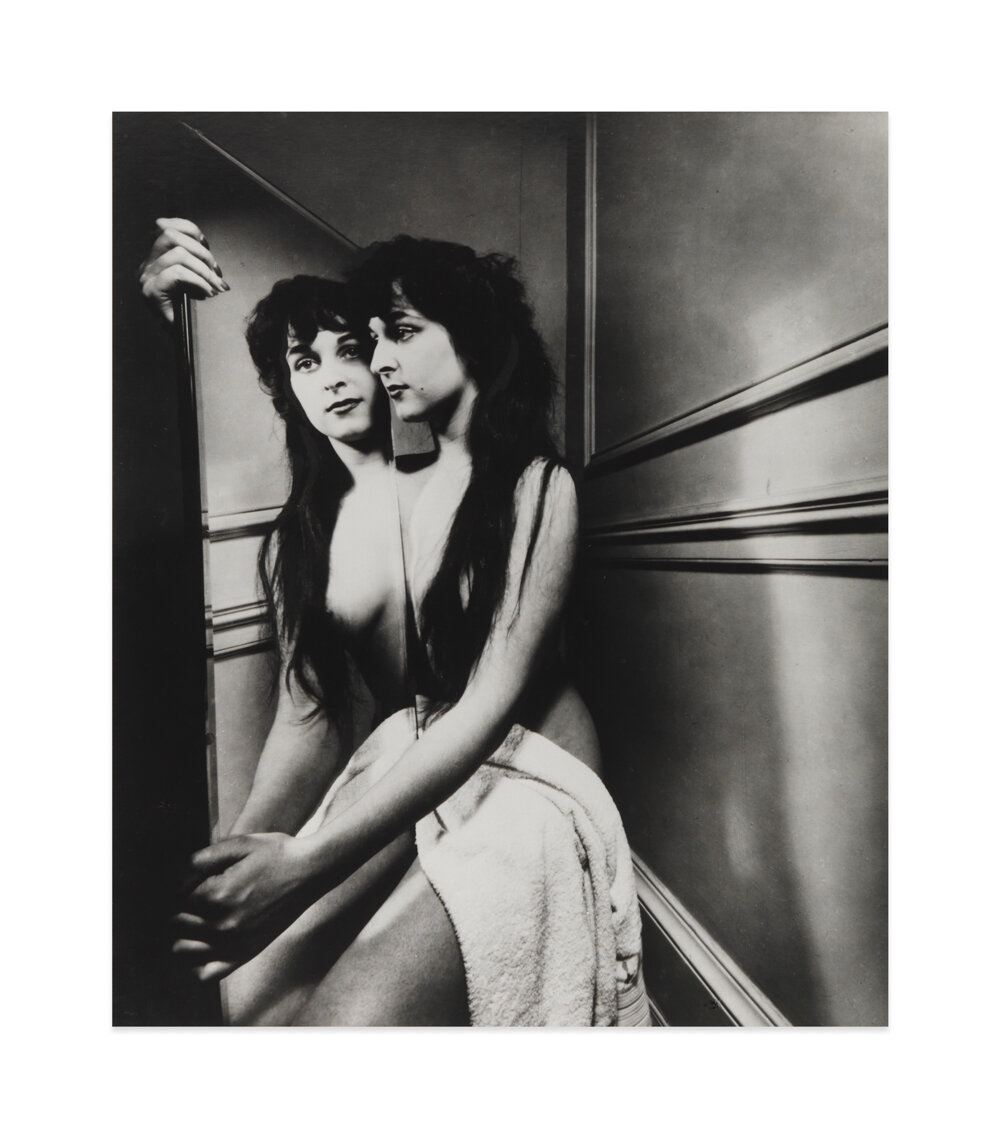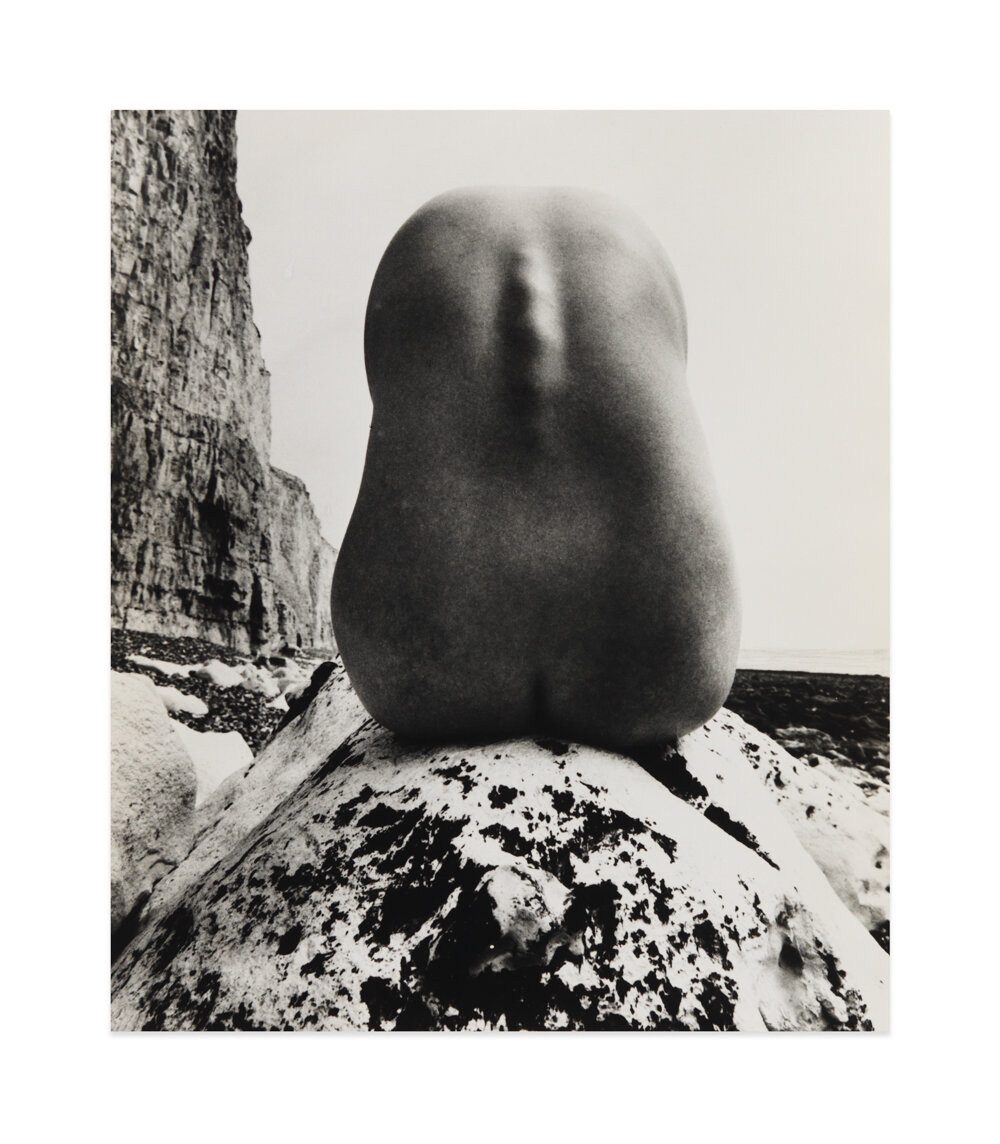Exhibition Review: Bill Brandt, Perspective of Nudes
Bill Brandt, Belgravia, London, February 1953 PN 1401-2
By Trevor Bishai
Bill Brandt made a place for himself as one of the most prominent photographers in Britain over the course of the twentieth century. Beginning as a photojournalist, Brandt produced a wide range of work throughout his career, including portraits, landscapes, and nudes, done entirely in black-and-white. Today, nearly forty years after his death, Marlborough Gallery showcases Brandt’s multi-decade-long preoccupation with the feminine nude with Perspective of Nudes (revisited). On show through May 8th, the exhibition highlights Brandt’s integration of natural and human forms, as well as his technical mastery of the photographic medium, both in and out of the darkroom.
Brandt began his career as a photojournalist, documenting the lives of everyday Britons and working for illustrated magazines. His first photobook, The English at Home, was an anthropological study of British life, showing with a distanced perspective the customs and habits of citizens from all walks of life. Following this, he was employed throughout the 1940s by the British government to capture scenes of daily life in Britain during the war. It was only after these stints in photojournalism that Brandt moved away from socio-political themes into more artistic work. In 1961, the publication of Perspective of Nudes marked, in the words of curators Martina Droth and Paul Messier, “the point at which Brandt’s stature as an art world figure came onto assured footing.” It was after this that people came to recognize Brandt as an artist rather than a journalist.
Bill Brandt, East Sussex Coast, July 1977 PN 3095-3
Landscapes were among Brandt’s most common subjects in his earlier work. In documenting Britain, he took many photographs of its iconic natural and archaeological forms. A 1947 photograph of Stonehenge, called “Stonehenge Under Snow” depicts the famous prehistoric monument with elegant and artistic composition, using great amounts of contrast and blank space—the stones are cast in deep blacks, while the snow and sky are almost without any detail. These two visual components, contrast and blank space, are used extensively in Brandt’s nudes, indicating that similar aesthetic interests were at play in both his documentary and artistic works.
Bill Brandt, East Sussex Coast, July 1977 PN 3095-3
The landscape was not set aside when Brandt turned to creating nudes, either. On the contrary, it is incorporated in a great many of his photographs of the feminine body. Nudes shot on the iconic rocky beaches of Europe combine the natural environment with body parts in a way that almost blends them into a unified whole. Brandt’s use of contrast is especially important here—for example, in “St Cyprien, France, October 1951,” the subject’s legs are rendered with shadows nearly identical to those on the body of water next to which she poses. This merging effect is not only accomplished with shading, but also through composition, as photographs such as “Baie des Agnes, France, 1959” depict interlocked fingers in a way that highly resembles the pebbles of the beach. Shot in extreme close-up and with meticulous shading, these body parts appear more as figures from modernist sculpture than actual body parts, evoking the forms of Brâncuși or Jean Arp.
Bill Brandt, London, March 1952 PN 1405-3
In order to create high-contrast prints with a great degree of detail, Brandt was known to manipulate his prints both before and after development, not only dodging and burning but also etching and shading them, with tools such as razor blades and graphite pencils. Looking very closely at the Marlborough prints, evidence of these surface manipulations can be seen. This preoccupation with retouching and attention to detail made Brandt a remarkably innovative artist at the time, engaging with the photographic print in uncommon ways.
Brandt’s use of a wide-angle lens is another very striking feature of his innovative photographic practice. He initially intended to use this type of lens to photograph large and great ceilings, but later realized that it also distorts subjects up close, noting that he had “never planned that.” Although this was a new discovery for Brandt, it soon became almost his signature aesthetic, and is especially evident in his nudes. Placing the camera very close to his subjects, the wide angle enlarges the foreground to a great degree, making body parts look highly disproportionate. Prime examples of these are found in “Campden Hill, August 1953” and “Hampstead, London, 1952” —in the latter, the subject’s feet are so distorted that they hide the rest of her body. This wide-angle technique gives many of Brandt’s nudes a highly surreal quality, in which the human body expands and warps into bizarre forms. Brandt’s work is thus particularly subversive given the history of the nude in art, which had long privileged proportion and symmetry.
Marlborough Gallery’s selection of thirty-five nudes thus showcase many facets of Brandt’s artistic career: the diffusion of a landscape aesthetic into the human form, his innovative darkroom techniques, and his disruption of the classical nude with hints of surrealism. Highly abstract and aesthetically engaging, Brandt’s nudes are a timeless constituent of twentieth-century photography.











